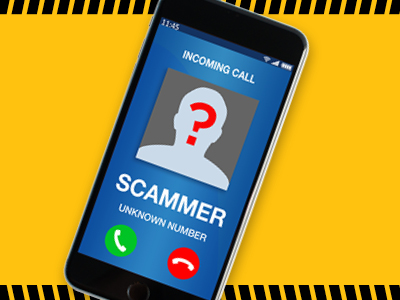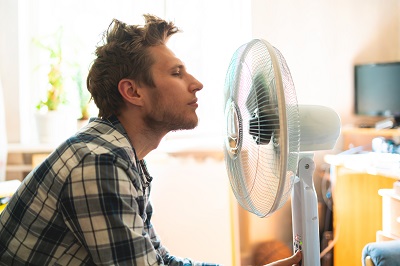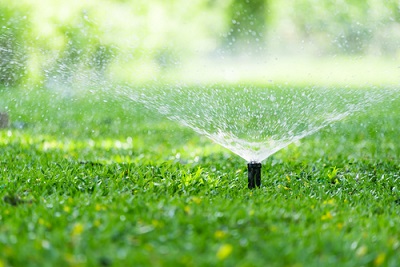Save Money with Easy Savings Ideas
Tools and Tips Can Help You Lower Utility Bills During Hot Weather
When temperatures rise, your air conditioner and water use usually go up as well. This can mean higher electricity and water bills during the warmer months. Austin Energy and Austin Water offer tools and tips to help you monitor your electricity and water use.
Whether you rent or own your home, these resources can help you reduce your water and energy use and increase your home’s overall efficiency.
Monitor Your Energy and Water Use
- Check your energy use regularly by logging in to Online Customer Care. You can compare your use to the previous month or year or to similar homes in your neighborhood. You can also set alerts for higher billing tiers and receive customized energy savings tips.
- The Austin Water WaterSmart website can help you save water and money. This report gives you a customized water use profile for your household, information on your past water use, tips for saving water, and links to Austin Water conservation programs. Use your City of Austin Utilities account number to log in today.
Find Help with High Utility Bills
The City of Austin has a long history of helping customers with their utility costs. The comprehensive Customer Assistance Program (CAP) channels millions of dollars annually to programs that help customers facing temporary and long-term financial difficulties as well as serious medical problems. Energy efficiency improvements are also available through CAP.
City of Austin services include:
- Utility Bill Discounts — Customers on low or fixed incomes who already participate in certain federal, state, or local assistance programs can benefit from the City of Austin’s CAP Discounts Program.
- Financial Support Plus 1 — This program helps customers who are having financial difficulties and are unable to pay their utility bills due to unexpected emergencies. Austin Energy partners with local social service agencies who administer the funding to qualifying customers.
- Ways to Help Neighbors — Make a real difference. Whether you are a City of Austin Utilities customer or not, you can give a practical and thoughtful Gift of Comfort to help pay a customer’s utility bill. Or, contribute a tax deductible donation to the Financial Support Plus 1 Fund when you pay your utility bill. Giving this one-time or monthly on-bill donation helps neighbors who need emergency assistance.
- Payment Arrangements — Payment arrangements are available to customers who fall behind on their utility bills. To enter into an arrangement, customers must pay their monthly bills on time and pay the current billed amount plus a monthly installment payment to reduce their delinquent balance.
- Budget Billing — Budget Billing is a service available to customers who prefer to avoid significant fluctuations in their monthly utility bills. To achieve this, Austin Energy takes an average of a customer's previous 12 months of utility bills to calculate an average utility bill payment.
- Services for the Medically-Vulnerable — The City of Austin offers a Medically Vulnerable Registry for customers with a long-term disease, ailment, or critical illness. Eligible customers receive extra support during power outages, one-on-one case management, and additional time to pay their bills. Check eligibility for yourself or a loved one.
Stop Utility Scammers — Don’t Fall for the Call

Scammers target Austin Energy and Austin Water customers with threats to disconnect your utilities unless payment is made immediately using an untraceable method. Customers can end up paying scammers and losing money. Don’t fall for the call!
Report suspicious calls to 3-1-1. Learn how to recognize a scam.
To safely and securely check your account balance or pay your bill, visit Online Customer Care or call 512-494-9400.
Remember These Rebates and Resources
- Residential Energy Rebates — Explore rebates to help you save energy and money at home.
- Residential Water Rebates — Austin Water provides several rebates to residential customers.
Try These Easy Savings Tips at Home

With local temperatures that reach above 100 degrees, try these tips to stay cool at home and save on your utility bills.
- Set your thermostat a few degrees higher during the warm months of the year. Raise the thermostat to 85 degrees when you are away for two hours or more and use fans to help stay comfortable when you are home.
- Install LED light bulbs. ENERGY STAR® qualified LEDs use at least 75% less electricity, generate less heat, and last about 50 times longer than regular incandescent bulbs, and five times longer than Compact Fluorescent Lightbulbs (CFLs).
- Save while streaming. Streaming video on a game console uses 15 times more energy than streaming on digital media players. Streaming on a laptop uses four times more energy than streaming on a tablet.
- Point fans in your direction. Fans blowing directly on you can make temperatures around you feel about 4 degrees cooler. Only keep fans on when you are in the room.
- Clean your AC condenser/evaporator coils. Clean coils lower your energy costs, extend the unit's life, and provide cleaner air for you to breathe.
- Keep debris and high grass away from the condenser. These obstacles block airflow, which makes the condenser work harder and run longer.
- Close shades/curtains on windows hit by direct sunlight. This helps to prevent heat from getting indoors.
- Provide shade for outside AC units. AC units shaded by trees or structures work more efficiently and use up to 10% less electricity.
- Dim the screen. Dim your televisions and computer screens to reduce energy use. Some TVs have a “home” or “standard” setting option to help. This can also help with eye fatigue.
- Avoid turning on the oven during the hottest time of the day. Using a microwave or a slow cooker produces less heat.
- Unplug appliances, chargers, and electronic devices when you are not using them. They use energy even when they are turned off. Turn off your lights when you leave a room.
See our full energy-saving tips list
Try these indoor and outdoor water saving tips, too:
- Water your lawn only on your assigned day and times.
- Take shorter showers (five minutes, tops). If you take a bath, fill the tub half full.
- Replace bathroom faucet aerators and showerheads. Aerators use 0.5 gallons per minute, and showerheads use 1.5 gallons per minute or less.
- Turn off the water. Don’t use water while shaving, brushing your teeth, lathering in the shower and shampooing or conditioning your hair.
- Only run your dishwasher when full. Scrape food from plates instead of rinsing.

Check for Leaks
Water leaks can cost you money and wastewater. Here is what to do if you suspect a leak:
- Check Your Water Meter. Write down a meter reading and check it again a few hours later (make sure not to use any water while performing this test).
- Toilets. Check for toilet leaks by adding several drops of food coloring to the tank. If the toilet is leaking, color will appear in the toilet bowl within 30 minutes. Leaking toilets can waste about 200 gallons of water every day.
- Faucets & Showerheads. Check all faucets and showerheads for drips. A slow drip can waste as much as 20 gallons of water each day.
- Washing Machine & Dishwasher. Look for water on the floor near your washing machine or dishwasher, it could mean a leak.
- Water Heater. Water dripping down the side of the tank could mean the pressure relief valve is stuck.
- Irrigation System. Check the irrigation system for damage, especially after mowing your lawn. Schedule a free irrigation system evaluation if needed.
- Soggy Spots. Soft, soggy, spots in your yard or uneven plant growth might be a sign of a leak in your underground water pipes.
- Home Foundation. Standing water around the foundation could mean your underground pipes have become damaged.
For additional details on leak detection, access leak detection resources from Austin Water.
Want to pass these tips along? Share these energy and water savings tips with your loved ones.
En español:
Learn More
- Learn about City of Austin Customer Assistance Programs
- Get Austin Energy’s tips for staying safe in hot weather
- Plan ahead for power outage emergencies
- Stay informed about any current outage emergency conditions
- Check the City of Austin’s emergency alert information
- See if you're eligible or learn how to donate to Financial Support Plus 1
- See if you're eligible for Weatherization Assistance
- Save even more with our Rebates and Incentives offerings
- Learn about heat awareness and water safety tips from Austin Public Health
- Learn about water safety tips from the American Red Cross
- Get more detailed energy-saving tips

